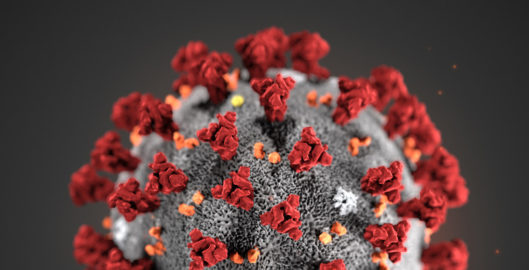It’s challenging to tell a story about something that’s invisible to the naked eye and tricky to explain. But it’s one we undertook, because rarely does a discovery come along that could revolutionize medicine. It’s called CRISPR and it stands for Clustered Regularly Interspaced Short Palindromic Repeats. CRISPR sounds more like a refrigerator compartment than a gene-editing tool, but it’s giving scientists power they could only imagine before – to easily edit DNA – allowing them to reprogram the genetic code of living things. That’s opening up the possibility of curing genetic diseases. Some researchers are even using it to try to prevent disease entirely by correcting defective genes in human embryos. We wanted to see for ourselves, so we went to meet a scientist at the center of the CRISPR craze.
“There are about 6,000 or more diseases that are caused by faulty genes. The hope is that we will be able to address most if not all of them.”
Bill Whitaker: This is CRISPR?
Feng Zhang: This has CRISPR in it.
Bill Whitaker: So– this is what’s revolutionizing science and biomedicine?
Feng Zhang: This is what many people are using– in research — and trying to develop treatments.
Bill Whitaker: That’s wild.
Feng Zhang: Yeah.
That little vial is igniting a big revolution that is likely to change the way doctors treat disease in the future. One of the brains behind it, is baby-faced Feng Zhang.

Feng Zhang speaks with correspondent Bill Whitaker
At 36, he’s already a tenured professor at MIT and a scientific celebrity because he figured out a way to override human genetic instructions using CRISPR.
Bill Whitaker: So, the CRISPR is not the liquid, the CRISPR is in the–
Feng Zhang: It’s dissolved in the liquid. There are probably billions of molecules of CRISPR…
Bill Whitaker: Billions?
BOTH: In here.
Feng Zhang: That’s right. And the way we use it is we take the liquid and apply it to cells.
For the last seven years, Zhang has been working on CRISPR at the Broad Institute in Cambridge, Massachusetts. It’s a research mecca brimming with some of the brightest scientific minds from Harvard and MIT on a mission to fight disease. CRISPR is making medical research faster, cheaper, easier. Zhang’s colleagues predict it will help them tackle diseases like cancer and Alzheimer’s.
Bill Whitaker: How many diseases are we talking about that this could be used to treat?
Feng Zhang: There are about 6,000 or more diseases that are caused by faulty genes. The hope is that we will be able to address most if not all of them.
Bill Whitaker: Most if not all of them?
Feng Zhang: That’s the long-term hope.
Bill Whitaker: So we’re talking diseases like Huntington’s—
Feng Zhang: Uh-huh.
Bill Whitaker: Sickle Cell.
Feng Zhang: Yup. ALS—hemophilia.
Eric Lander: I think CRISPR, it’s fair to say, is perhaps the most surprising discovery and maybe most consequential discovery in this century so far.

Eric Lander, director of the Broad Institute, speaks with correspondent Bill Whitaker
To understand exactly what CRISPR is, we went to Eric Lander for a quick science lesson. He’s director of the Broad and Zhang’s mentor. He’s best known for being a leader of the Human Genome Project that mapped out all of our DNA, which is like a recurring sequence of letters.
Eric Lander: During the Human Genome Project, we could read out all the human DNA, and then, in the years afterwards, find the misspellings that caused human diseases. But we had no way to think about how to fix ’em. And then, pretty much on schedule, this mind-blowing discovery that bacteria have a way to fix those misspellings, appears.
Bill Whitaker: This comes from bacteria?
Eric Lander: This comes from bacteria. Bacteria, you know, they have a problem. And they came up with a real clever solution. When they get infected by viruses, they keep a little bit of DNA, and they use it as a reminder. And they have this system called CRISPR that grabs those reminders and searches around and says, “If I ever see that again, I am gonna cut it.”
Zhang used that same bacterial system to edit DNA in human cells. Our DNA is made up of chemical bases abbreviated by the letters A, T, C, and G. As you can see in this animation from Zhang’s lab at MIT, a mutation that causes disease reads like a typo in those genetic instructions. If scientists can identify the typo, they can program CRISPR to find it and try to correct it.
Bill Whitaker: You program it? You say–
Feng Zhang: That’s right.
Bill Whitaker: “I’m looking for this string of letters.”
Feng Zhang: Uh-huh.
Bill Whitaker: And the CRISPR will go in, and out of all of the billions and billions and billions of– of letters on your DNA, find the exact ones that you have programmed?
Feng Zhang: That’s right. CRISPR will allow you to– do many different things. You can cut it– to edit it.
Bill Whitaker: So you can snip out the bad part and you can add something that you want as well?
Feng Zhang: That’s right. You can give the cell a new piece of DNA that carries the sequence you want to incorporate into the genome.
Bill Whitaker: You say this so matter of factly. This is amazing.
Feng Zhang: It is pretty cool.
Bill Whitaker: How many other labs around the world are working with CRISPR like this?
Feng Zhang: Many. One of the things that we have been doing is to make the tool available to researchers. To date I think we have gotten it out over– 45,000 times, to 2,200 labs, in 61 countries.
Bill Whitaker: What are they doing with it?
Feng Zhang: They are using it to do everything. A lot of applications of CRISPR. It’s really a Swiss army knife.
Cue the worldwide CRISPR frenzy. At the University of California, scientists used a form of CRISPR to edit mosquitos so they can’t transmit malaria. Their colleagues are modifying rice to better withstand floods and drought. In China, scientists tweaked a gene in beagles to make them more muscular.

A CRISPR vial from Zhang’s lab made its way to Dr. Kang Zhang. He is an ophthalmologist and a professor at the University of California, San Diego and wanted to see what all the hype was about.
Bill Whitaker: What did you think when you first heard of CRISPR?
Kang Zhang: I was a little bit skeptical.
Bill Whitaker: Why skeptical?
Kang Zhang: It worked so well. Too well to be believable.
He decided to experiment on mice with retinitis pigmentosa, a genetic form of blindness. He conducted a vision test using a mouse with the disease.
Bill Whitaker: This is the blind mouse?
Kang Zhang: This is the blind mouse. And– obviously, you can see that he is ignoring the rotating stripes.
His researchers injected CRISPR into the eye of another blind mouse. The CRISPR was programmed to find the main gene associated with the disease and turn it off. It takes three months to see the results.
Kang Zhang: Now, let’s see how he’s responding to the light.
Bill Whitaker: He’s following it around.
Kang Zhang: Yes.
Bill Whitaker: Look at that. You’re sure that he is seeing these lights?
Kang Zhang: This is actually a very commonly used test for vision.
Bill Whitaker: How much of their sight do they recover?
Kang Zhang: About 30, sometimes even 50% of the sight for– for mice.
The next phase of Dr. Zhang’s research is to see how CRISPR works on one of our closer relatives. He sent us this video from his lab in China where he’s studying monkeys with retinitis pigmentosa. The blind monkey ignores the food. He says this monkey was treated with CRISPR and it’s easy to see the difference. Dr. Zhang hopes to try this on humans soon.
If CRISPR is used to treat disease or make a drug it could mean big bucks. The Broad and Feng Zhang hold a primary patent for CRISPR’s use in human cells in the United States. But no technology is developed in a vacuum. Biochemist Jennifer Doudna at the University of California, Berkeley and her team made landmark CRISPR discoveries.
This week, they are challenging Zhang and the Broad in court for the rights arguing in part that Zhang’s advance was derived from her team’s breakthrough. It’s a high stakes battle. CRISPR is projected to be a multi-billion dollar market in a decade.
Bill Whitaker: Does that mean big business for you?
Feng Zhang: I think we’re– we’re still– quite a ways away from developing– CRISPR into a real therapeutic.
Bill Whitaker: I think you’re being a little bit modest. I mean this is sparking an incredible boom in biomedicine. And you’re in the center of it.
Feng Zhang: I think there is still really a lot of work that still needs to be done, developing the systems so that they are efficient enough, making sure that they are safe enough, but these are things that– that we’re working hard to– to make possible.
“While it’s not gonna affect somebody who might be dying of a disease today, this is gonna have a real effect over the course of the next decade and couple of decades.”
But, what if it were possible to stop disease from even occurring? That sounds like science fiction, but a team of researchers in Portland, Oregon say with CRISPR, it’s now a reality.
Bill Whitaker: You correct it at the very, very earliest stages of life.
Shoukhrat Mitalipov: Right.
Bill Whitaker: In the womb.
Shoukhrat Mitalipov: Even before the womb.
Manipulating embryos has been the focus of Shoukhrat Mitalipov’s career. He runs the Center for Embryonic Cell and Gene Therapy at Oregon Health and Science University. Mitalipov is a maverick. He regularly makes headlines with his innovative, sometimes controversial methods to prevent genetic disease.
Shoukhrat Mitalipov: Preventing is always more effective– so there would be no– no recurrence of new disease. Particularly when we’re talking about heritable– diseases that parents pass to children.
So Mitalipov and an international team of scientists decided to use CRISPR on human embryos to correct a single genetic mutation that causes a deadly heart disease called hypertropic cardiomyopathy.
They got healthy eggs from donors and sperm from a man who carries the disease. At the same time the eggs are fertilized, they also get an injection of CRISPR. Mitalipov enlarged the microscopic procedure over three hundred times so we could see it.
Shoukhrat Mitalipov: Here we have our pipette with sperm inside, which has been already exposed to CRISPR. And this is a egg. And so what we need to do is pierce through, and then we break membrane. And now –
Bill Whitaker: Release the sperm into the egg.
Shoukhrat Mitalipov: Yeah. And now this is the sperm coming in.
Bill Whitaker: Wow.
Shoukhrat Mitalipov: Now it’s inside there.
Bill Whitaker: Just like that, that egg has been CRISPRed?
Shoukhrat Mitalipov: CRISPRed, fertilized.
Bill Whitaker: And you have changed the genetic destiny of that embryo.
Shoukhrat Mitalipov: Yes, we believe so.
These embryos will never be implanted, but they are grown in an incubator for three days and then checked to see if they carry the disease mutation.
Normally, 50 percent would. Mitalipov says with CRISPR, 72 percent were free of the mutation that would cause the heart disease.
Bill Whitaker: This is a huge– advance in science and medicine.
Shoukhrat Mitalipov: We hope so. I think we– we’re still kind of in the early stages. I wouldn’t say that we are ready to– to go to clinics now.
He knows his results have to be replicated by an outside lab before they’re accepted by the scientific community. But if they hold up, one day CRISPR could be used to help families that have been plagued by inherited disease for generations.
Bill Whitaker: Is that what drives you?
Shoukhrat Mitalipov: Yes. Of course, it’s a suffering of children, but also the guilt the parents have at saying, “I passed it to my child.” So it’s like, “I caused this disease.” And I think now, we have a tool where we could help these families.
Mitalipov wants to use CRISPR to eliminate disease, but the concern is his research has created a blueprint for less scrupulous doctors to design human beings – to edit embryos to make babies that are smarter, taller, stronger. Mitalipov says that’s not even possible right now.
Bill Whitaker: Your critics say that you’re playing God.
Shoukhrat Mitalipov: I think– you could say to– to every treatment that they– humans and doctors develop that– we– we’re playing God. God gave us brains so we could find a way to eliminate suffering of human beings. And if that’s– you know, playing God, I guess that’s the way it is.
Bill Whitaker: So what do you think about editing an embryo to prevent disease?
Feng Zhang: We don’t really understand how complicated biology is. There’s a gene called PCSK9. If you remove PCSK9, you can reduce cardiovascular disease, heart attack– risks significantly. But it also has been shown recently to increase risk for diabetes. So how do you make the judgment call between these tradeoffs? And there will likely be other—impacts we haven’t yet identified. So I think we need to wait and be more cautious.
Eric Lander: I don’t think we’re close to ready to use it to go edit the human population. I think we’ve gotta use it for medicine for a while. I think those are the urgent questions. That’s what people want right now, is they want cures for disease.
Those urgent questions might soon be answered. A small clinical trial, the first in the U.S. using CRISPR to target certain types of cancer, is now enrolling patients.
Eric Lander: I wanna always balance hope versus hype here. While it’s not gonna affect somebody who might be dying of a disease today, this is gonna have a real effect over the course of the next decade and couple of decades. And for the next generation, I think it’ll be transformative.
Produced by Nichole Marks. Associate producers, Kate Morris and Jaime Woods.



















